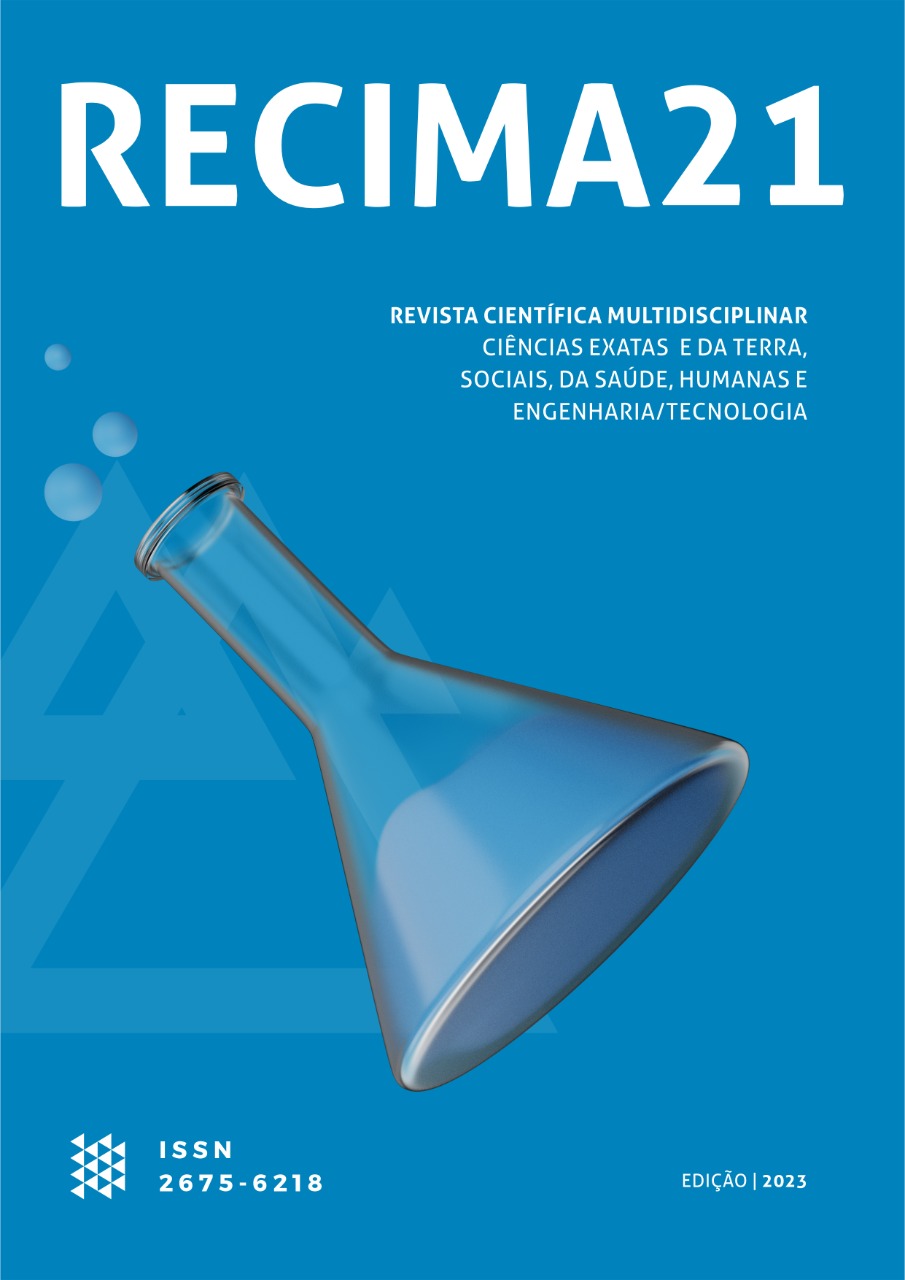STUDY THE TECHNICAL FEASIBILITY OF USING CONSTRUCTION WASTE IN THE PRODUCTION OF CONCRETE
DOI:
https://doi.org/10.47820/recima21.v4i11.4527Keywords:
Reuse. Porosity. Resistance.Abstract
Ecological awareness is increasingly present in society and in the consumer sector, imposing requirements on the industrial sector that go through the low impact before and after the production of the product, currently there is a great concern of the construction industry regarding the reuse and recycling of the waste produced. The civil construction sector has considered the possibility of incorporating solid waste, as a substitute for natural aggregates, for the preparation of non-structural concrete. Emphasizing the need to carry out further studies in this area, in order to obtain a cementitious matrix of acceptable quality by the standards that govern structural elements in civil construction. In the study, the collection of Construction and Demolition Waste (CDW) was carried out in the municipality of Paragominas-PA, the collection method was "house to house". In total, six hundred and ninety-three kilograms and ninety-six grams of CDW were collected, these were characterized and the substitution used in this work was 100% of the coarse aggregate, after the preparation of the specimen, the cementitious matrix was characterized, in which the void index and pH indicator were determined, all results were statistically treated. The data obtained showed that the average size of gravel 2 and 3 proved to be an excellent size for the CDW to be used in the cementitious matrix in place of coarse aggregate.
Downloads
References
ABNT – ASSOCIACAO BRASILEIRA DE NORMAS TÉCNICAS. NBR 10004: Resíduos sólidos – classificação. Rio de Janeiro: ABNT, 2004.
ABNT – ASSOCIACAO BRASILEIRA DE NORMAS TÉCNICAS. NBR 9778: Argamassa de concreto endurecido – Determinação da absorção de água, índice de vazios e massa específica. Rio de Janeiro: ABNT, 2005.
ÂNGULO, Sérgio Cirelli. Caracterização de agregado de resíduos de construção e demolição reciclados e a influência de suas características no comportamento mecânico de concretos. 2005. 167f. Tese (Doutorado) - Escola politécnica de São Paulo, Departamento de Engenharia de Construção Civil, São Paulo, 2005.
CONSELHO NACIONAL DO MEIO AMBIENTE. Resolução nº 307 de 5 de julho de 2002. Estabelece diretrizes, critérios e procedimentos para a gestão dos resíduos da construção civil. Brasilia: Conselo Nacional do Meio Ambiente, 2002 p. 95-96. Disponível em: www.mma.gov.br/port/conama/legiabre.cfm. Acesso em: 29 fev. 2022.
CORDEIRO, Priscilla Coelho. Estudo do avanço da frente de carbonatação em compósitos cimentícios produzidos com baixos teores de aditivos incorporadores de ar. 2018. 137f. Tese (Dissertação) - Universidade Federal de Minas Gerais Escola de Engenharia, Belo Horizonte, 2018.
COSTA, José Yter Alcantara, Agregado reciclado de resíduos de construção e demolição: variabilidade e influência no comportamento mecânico do concreto. 2018. 171f. Tese (Dissertação Universidade São Judas Tadeu, São Paulo, 2018.
DUTRA, Carrinne; MOREIRA, Damião Santos; AGUIAR, Eduardo Albuquerque. O efeito do índice de vazios e do coeficiente de permeabilidade nas propriedades mecânicas de concretos permeáveis. 2021. Trabalho de conclusão de curso (bacharel em engenharia civil) - Universidade São Judas Tadeu, São Paulo, 2021.
EUROPEAN STANDARD - EUROPEAN COMMITTEE FOR STANDARDIZATION. EN 14630: Products and systems for the protection and repair of concrete structures - Test methods - Determination of carbonation depth in hardened concrete by the phenolphthalein method. [S. l.]: European Standard, 2006.
INSTITUTO BRASILEIRO DE GEOGRAFÍA E ESTATÍSTICA. IBGE Cidades estimativa da população. Brasilia: IBGE, 2021. Disponível em: https://cidades.ibge.gov.br/brasil/pa/paragominas/panorama. Acesso em: 20 set. 2022.
INTERNATIONAL STANDARD. ISO 1920-12: Testing of concrete — Determination of the carbonation resistance of concrete — Accelerated carbonation method. [S. l.]: ISO, 2015.
NORDTEST METHOD. NT BUILD 492: Concrete, mortar and cement-based repair materials: chloride migration coefficient from non-steady-state migration experiments. [S. l.]: NT, 1999.
SCHEIFER, Danielle Melo; CALLEJAS, Ivan Julio Apolonio. Caracterização física e mecânica de blocos de concreto com incorporação de areia de resíduo de construção civil. Revista matéria, v. 26, p. 15, 2021. ISSN 1517-7076.
SOUZA, Luana Lima; LOBO, Ronilson Rosário; MOREIRA, Darci; BRITO, Rodolfo Pereira. Estudo da viabilidade técnica de reutilização dos rejeitos da construção civil e reforma. 2020. Trabalho de conclusão do curso (Engenharia Ambiental e Sanitária) - Universidade do Estado do Pará, Belém, 2020.
TRENTIN, Priscila Ongaratto, MANICA, Jocasta; VANZETTO, Suelen Cristina; MARANGONI, Bruno; ZALESKI, Alessandra. Substituição parcial de agregado miúdo por resíduo de vidro moído na produção de argamassa. Revista matéria, v. 25, p. 14, 2020. ISSN 1517-7076.
Downloads
Published
How to Cite
License
Copyright (c) 2023 RECIMA21 - Revista Científica Multidisciplinar - ISSN 2675-6218

This work is licensed under a Creative Commons Attribution 4.0 International License.
Os direitos autorais dos artigos/resenhas/TCCs publicados pertecem à revista RECIMA21, e seguem o padrão Creative Commons (CC BY 4.0), permitindo a cópia ou reprodução, desde que cite a fonte e respeite os direitos dos autores e contenham menção aos mesmos nos créditos. Toda e qualquer obra publicada na revista, seu conteúdo é de responsabilidade dos autores, cabendo a RECIMA21 apenas ser o veículo de divulgação, seguindo os padrões nacionais e internacionais de publicação.













